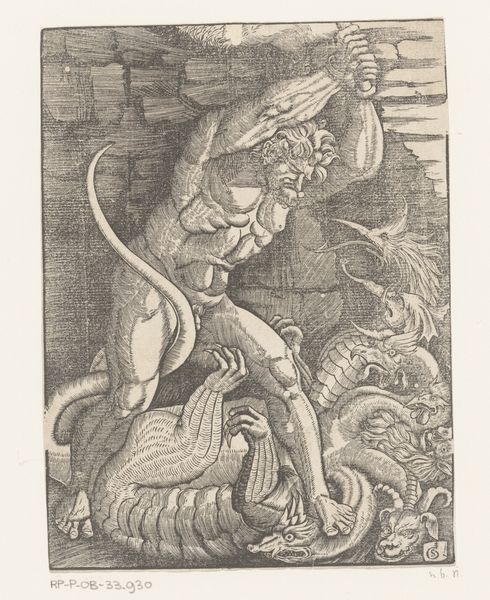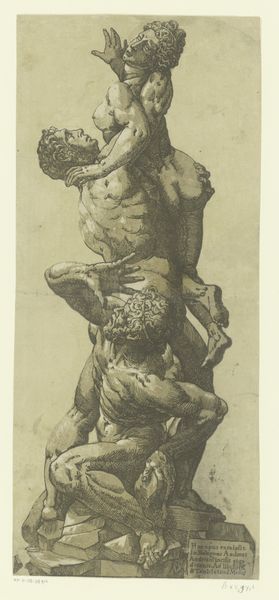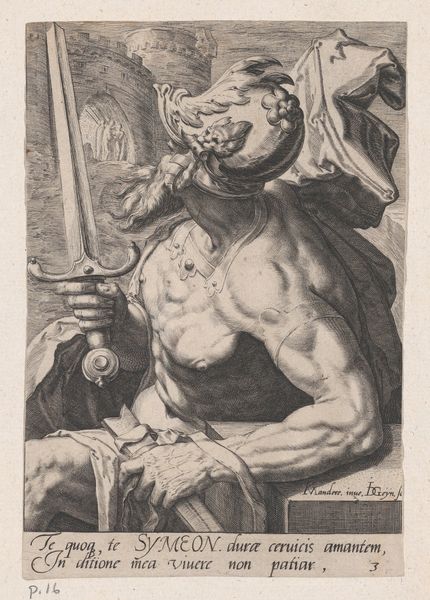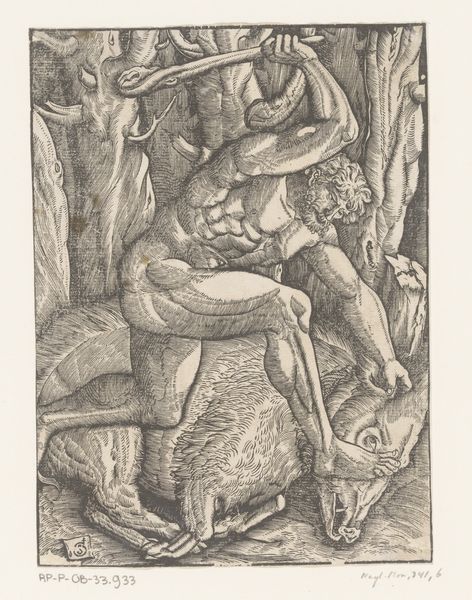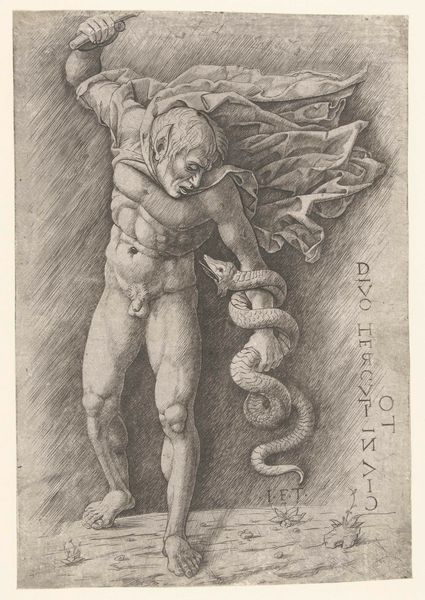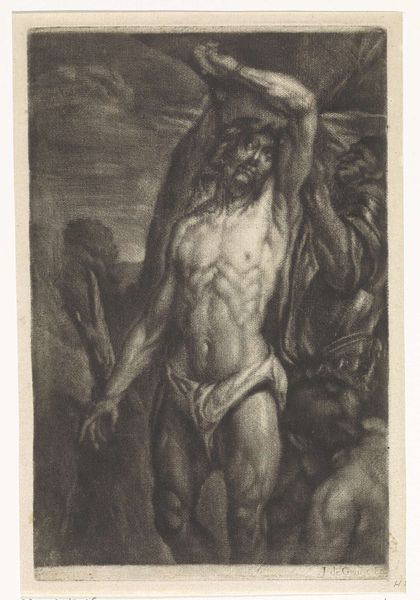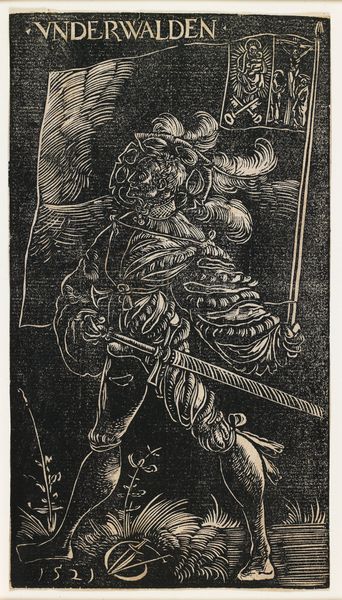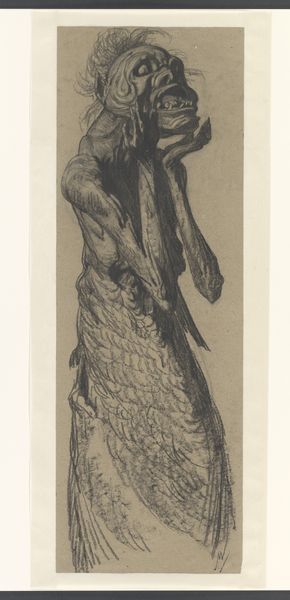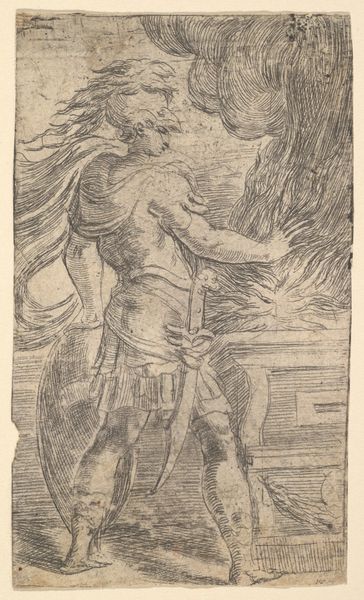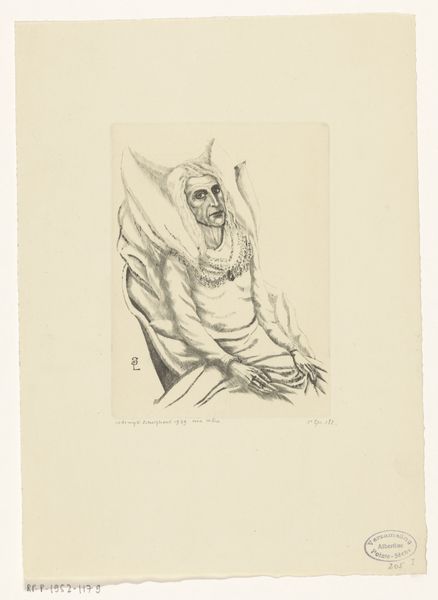
drawing, graphite
#
portrait
#
drawing
#
caricature
#
figuration
#
symbolism
#
graphite
Dimensions: height 297 mm, width 223 mm
Copyright: Rijks Museum: Open Domain
Curator: Before us is the graphite drawing titled "Centaur," attributed to Henri van der Stok, created sometime between 1880 and 1932. It's currently held here at the Rijksmuseum. Editor: What strikes me immediately is the tension between the obviously muscular build and that delicately extended hand. It’s almost bird-like in its fragility, creating an unexpected vulnerability. Curator: Interesting observation! Considering van der Stok’s body of work and the period, one can easily draw parallels between this artwork and the Symbolist movement. The Centaur, a being half-human and half-animal, could be interpreted as a symbolic representation of the inner conflict within humanity itself. Editor: Yes, the symbolic charge is potent here. Centaurs have always embodied that duality—the rational intellect struggling with primal instincts. The wings too are quite peculiar, almost more like leaf fronds, less about soaring freedom and more about…entrapment? Curator: I agree about the leaf-like quality of the wings; that links it with themes present at the time in broader society where people were reflecting on humanities relationship with the natural world. This piece reflects an awareness that human society, by 1900, was really struggling to position itself in relation to the more traditional relationship that existed before industrialization. Editor: The detail in his beard, those very specific, curling lines… It seems almost archaic, harking back to Mesopotamian or Assyrian imagery. It gives the creature a sense of deep history, almost a timeless quality. Curator: Indeed! By alluding to such iconography, van der Stok may be implying the enduring nature of human struggles and desires through art history. Perhaps referencing our primitive urges, even within what appears to be refined and civilized society. Editor: The dark background is a little unsettling, almost ominous. A pale moon or star is just barely visible there... Like a distant hope in what feels like an existential crisis embodied in this single, hybrid creature. Curator: We can definitely conclude that the “Centaur”, even though rendered simply with graphite, presents itself as a reflection on what the future would look like. Editor: Exactly, a testament to the enduring power of symbols and how they can compress and release centuries of human experience and contemplation.
Comments
No comments
Be the first to comment and join the conversation on the ultimate creative platform.

